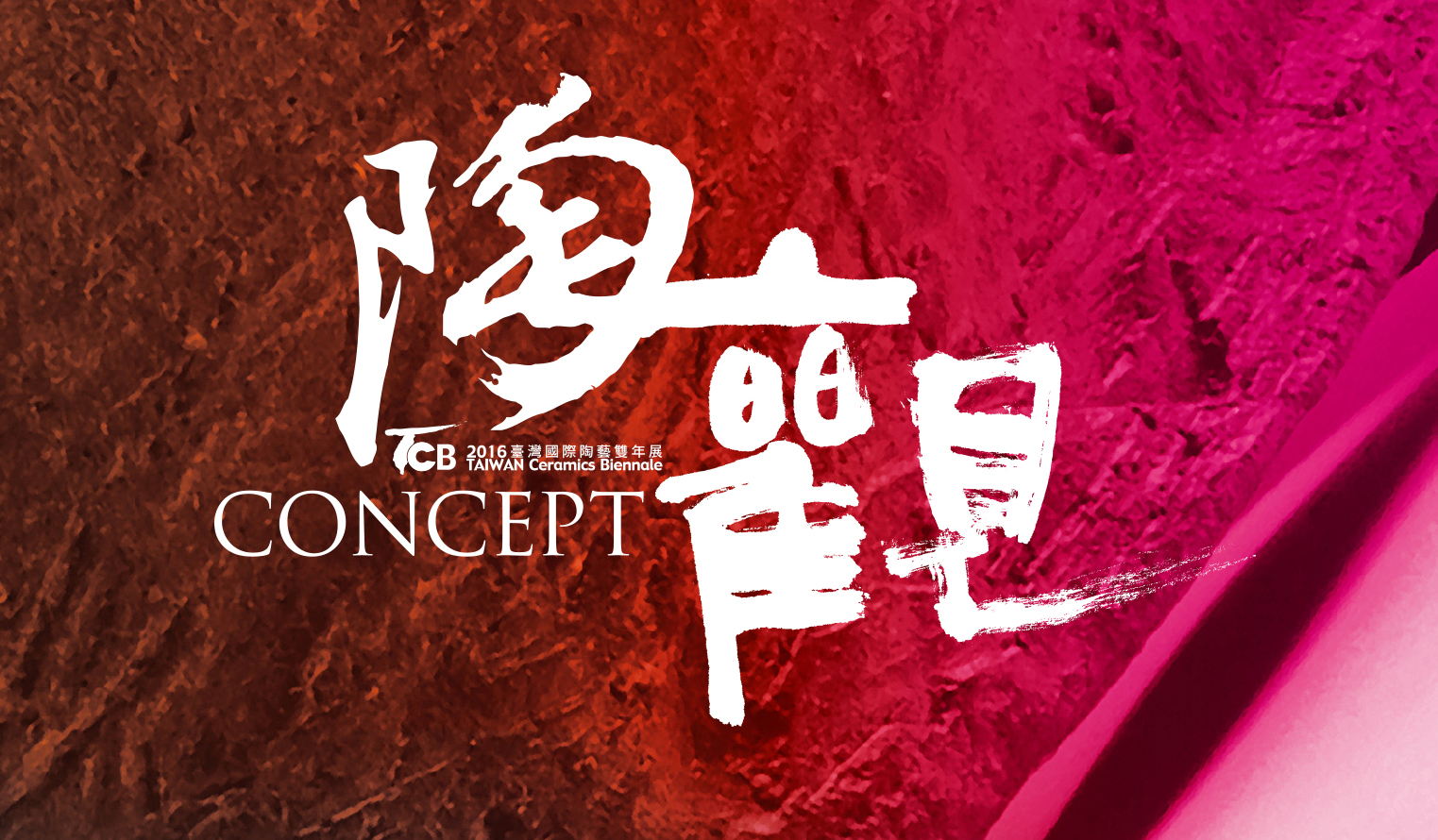
Contemporary ceramic art is a form of art developed from traditional ceramics. Artists explore new creative possibilities among conventional pottery shapes. They give new life to objects. They extend their artistic energy, creativity and visions to their artwork. Whether an expression of tangible figure or intangible ideas, ceramic artwork is an articulation of vision and a practice of ideas. Those pieces of art are not merely some visible objects. They are also interpretations of ways of thinking about ceramic art and platforms where art collides and intertwines with the society, environment and public sphere. By observing, pondering, analyzing and reviewing their own culture, artists search for their core values, identities and cultural significance. Only when they come back to the very essence will they be able to thoroughly engage in independent thinking, to make decisions, to raise questions, and to change the status quote—which is one of the missions of art creation.
Whether in one piece or in multiple pieces, those works of art explore the nature of ceramics, creative expressions of ceramic art and traditional as well as innovative techniques to realize the richness and diversification of modern ceramic art. They concretely manifest the primary spirit of “ceramics” and the theme “Concept”. In addition, in recent years, many artists have paid close attention on expanding the boundaries of ceramic art, crossover art, breakthroughs of languages and forms of creative expression, searching for the application of new materials, and expanding the depth and width of ceramic creation. Yet those global trends in modern art also reveal the blurring lines and uncertainties of the homogeneity and heterogeneity of materials and those of crossover collaborations in ceramic art. Another concern worth examining is the global ceramic art talent gap. In any case, the diversification of modern ceramic art comes from artists who freely express their various ways of thinking through their own art languages. And that is exactly what Taiwan Ceramics Biennale would like to present through the means of international competition, in order to inspire new possibilities of ceramic art and other fields in Taiwan, to represent different ideologies, and to lead the general public to enter and experience the beauty of ceramic art.
This year’s Taiwan Ceramics Biennale, with a core structure centered on the theme “Concept”, has further categorized the 119 pieces of art into two sub-themes based on artist’s statements and forms of expression, in order to help the viewers to obtain a general understanding of the artwork and of the relationships among materials, functions, forms, space and creation concepts. The two sub-themes are “Ceramics Beyond Vessels” and “Concept Beyond Objects”. As a matter of fact, no categorization can fully describe the ideas and concepts of the artwork created. However it is still hoped that the sub-themes for and the visual display of the works of art may guide viewers in their appreciation, reflection and exchanging ideas as they navigate the world of those artists and learn the nature of the artwork and the trends of modern ceramic art.
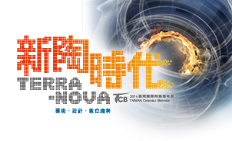
Following the 2012 biennale, which was held around a competition of ceramic works, Yingge Ceramics Museum began to plan for the 2014 event. Like the one in 2010, it is to be based on a curatorial competition. So early this year, an invitation was issued to ceramic professionals, scholars and curators to ask for exhibition proposals in the form of an outline. As of the end of March deadline, 18 proposals from 12 countries were received. They were reviewed by seven Taiwanese judges, including curators, ceramic artists and experts, in a meeting held at Yingge Ceramics Museum on the afternoon of April 29. The judges studied the potential for development and execution of each proposal as well as the experience of each curator who had submitted a proposal before picking eight for consideration in the final selection. For this stage, each of the eight curators was asked to provide a detailed proposal.
When the deadline for that expired on June 30, the museum received detailed and complete proposals from seven curators. Three foreign judges -- from Australia, the United States and Japan, respectively -- joined four local judges for the final selection meeting on the morning of Aug. 5. They discussed issues such as the theme of each proposal and the strength of its argument, the feasibility of the plan, its comprehensiveness, display arrangement, educational activities and publicity recommendations. In the end, Wendy Gers from South Africa won out with her proposal titled “Ceramics Now: Art, Design & Digital Materiality” to become the winning curator of the 2014 Taiwan Ceramics Biennale.
The concepts contained in the seven proposals reviewed by the judges were varied. One began with the nature of ceramic as a medium and sought to display the techniques and process of the making of ceramics. Another one employed modern technologies and added elements of media such as audio-visual recordings and action art. Yet another focused on the development of 3D printing and virtual pottery wheels as examples of the combination of contemporary ceramic art and new technologies. It was evident that all the proposals were full of creative ideas on the part of the participating curators and their observations and creative thinking about the trends in contemporary ceramic art. These efforts made interesting topics during the selection process.
During that process, several judges expressed the view that the Taiwan Ceramics Biennale should be one that can facilitate exchange and dialogue between Taiwan and the world outside by ensuring the event is both Taiwanese and international in nature. The judges also hoped the biennale can be influential enough to provide some theoretical basis for future studies on ceramics. It was hoped that the event will contribute a perspective that is both global and forward-looking to the development of contemporary ceramic art and help inspire local artists at the same time. It is because of these considerations that the proposal by Gers won unanimous approval. In her proposal, Gers touched on such topics as local traditional ceramic works, the current trend of ceramic recycling and another new trend to combine ceramic art and technologies. She envisioned an exhibition that would encompass both the past and the future, one that would display works from a great variety of sources and that would contain educational activities featuring Taiwanese culture.
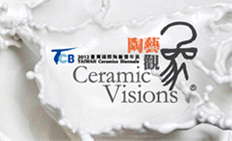
The 2012 Taiwan Ceramics Biennale selects works to be exhibited at the biennale through a competitive format. In addition to the competition element of the biennale, Yingge Ceramics Museum also presents an exhibition that focuses on the meaning the 111 artists convey through their works. To that end, it is our hope that dividing the pieces into one central theme and four sub-themes will enable visitors to better understand and appreciate the works.
Ceramic Visions
The word "manifestation" (象) refers to the appearance of an object. It also alludes to the creative process in which an artist combines a tangible exterior with intangible ideas. The nominated works for this exhibition can be divided into four broad categories: Physical Manifestation - the pursuit of external beauty; Mental Manifestation - uncovering inner feelings and emotions; Environmental Manifestation - a narrative record of the contemporary social environment; Existential Manifestation - a discussion of change and uncertainty in time and space.
"Observation" (觀象) suggests the existence of different interpretative viewpoints. Although an artist's work is infused with his or her own point of view, when seen by a third party, the power of interpretation is transferred to the viewer. The result is often an altogether different understanding. In this sense, a work of art is like a mirror, because it reflects the life experience and inner world of the observer. At the same time, the process of viewing art also forces the observer to reconsider the relationships between objects and their meaning. The result is a dialogue with the artist that can lead to even more creative sparks.
"Manifestation" and "observation" are elements in an ongoing dialectical discourse between artist and viewer. It is through this dynamic process that we have crafted a ceramic vision that is highly diverse in nature. The 2012 Taiwan Ceramics Biennale encourages viewers to embrace their own interpretations of the works on display. Within an arena in which there are no limits to exchange, the biennale showcases a very modern vision of ceramic art.
The exhibition theme and categories were chosen to help viewers better appreciate and understand the art works on display. However, although categorization can be useful as a rough guide it also places artificial limits around artistic creation, so it is important to recognize that the four manifestations adopted at the biennale offer visitors nothing more than a place to start their exploration of ceramic art. Ultimately, how an individual interprets or feels about a work of art is determined at a personal level and that is the spirit that underpins this exhibition. The 2012 Taiwan Ceramics Biennale invited four art critics to evaluate works in the four designated categories, believing that different perspectives would ensure an exhibition as rich and diverse in ideas and opinions as art.
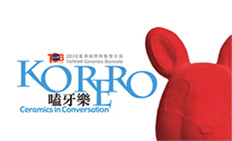
This is an international exhibition where the conversations are between ceramics, one of the oldest art forms in history, and with contemporary life in all its variants.
The great American, Ralph Waldo Emerson, in 1849, said, ‘In conversation the game is to say something new with old words’. So it is when the conversation is applied to art, particularly ceramic art, for the tools are long known and layered in antiquity but the expression must be contemporary.
Studio ceramics, along with contemporary art of many genres is deeply engaged in exchanges – with other art forms, with histories, with philosophies, with wider domains such as industrial production, with current preoccupations and spheres of contemporary life, in fact with society and culture in all its diversities, and these are often referred to in texts as ‘conversations’.
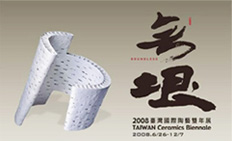
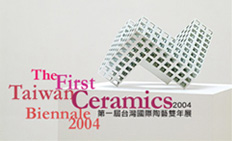
Taiwan’s contemporary ceramics follows traditions established by preceding generations. A style unique to the island has grown and developed over the course of the past several decades. In the 1980s and 90s, ceramicists schooled in Western countries and Japan returned to Taiwan, bringing a new contemporary style to their work. As Taiwan’s contemporary ceramics continued to flourish, local ceramicists began to have exchanges with the international ceramics community. The ideas of contemporary ceramicists from Taiwan were heard in many countries around the world.
The first Taiwan Ceramics Biennale invites ceramic critics and ceramicists to Taiwan to take part in the international competition, symposium and workshops, bringing their own experience in ceramics and unique pottery making techniques. At the onset of the new century we hope through this biennial event to witness the development of ceramic art in the world and inject more vitality into a new epoch for ceramics.










